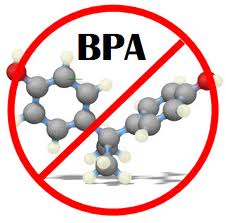 In recent months a chemical found in several common household products has been on the crosshairs of a number of organizations as they have sought, at this point unsuccessfully, to ban a dangerous chemical that has been linked to several adverse health events.
In recent months a chemical found in several common household products has been on the crosshairs of a number of organizations as they have sought, at this point unsuccessfully, to ban a dangerous chemical that has been linked to several adverse health events.
The chemical is Bisphenol A or BPA and it is found in bottled waters, plastic packaging, and other products. It is believed that when these plastics degrade, BPA is released into the environment and routinely ingested; causing several adverse health and development effects, from cancer and neurological disorders to physiological defects and perhaps even obesity.
But now according to Science Daily, new research suggests the real threat of the chemical comes once it’s broken down in the body and interferes with the endocrine system.
The finding is concerning, considering more than 90% of Americans show exposure to BPA at varying levels. But the finding could also lead to ways to promote health, according to the researchers.
The new research published in the October 4 online issue of the journal PLOS ONE, two scientists at UC San Diego School of Medicine say three-dimensional modeling suggests a metabolite of BPA — a molecule produced when BPA is metabolized or broken down by the body — actually binds to the estrogen receptor much more strongly than BPA itself. The finding could point the way to development of a new class of drugs designed to specifically inhibit excessive estrogen activity linked to disease.
In the newest study, researchers at UC San Diego School of Medicine use a 3D model to find how BPA is metabolized in the body.
What they discovered is that it’s not BPA itself, but a metabolite that strongly binds to estrogen receptors.
Scientists knew that BPA itself attaches weakly to estrogen receptor, leading them to suspect something else was going on.
According to Michael E. Baker, PhD, UCSD professor of medicine, and Charlie Chandsawangbhuwana, a graduate student in the UCSD Department of Bioengineering, a compound given the name MBP was previously discovered by researchers at Hiroshima International University that is a metabolite of BPA. Scientists knew MBP has a greater affinity for attaching to estrogen receptors but how that happens wasn’t pursued.
The UCSD researchers picked up on the study and took it further. They found out both ends of the MBP molecule interact with estrogen receptors in the same way as estradiol. BPA only attaches at one end, explaining its weak connection.
Estradiol is a steroid hormone that’s important for fetal growth. The hormone is also important for normal development of the sex organs.
“In other words, MPB is basically grabbing onto the estrogen receptor with two hands compared to just one hand for BPA,” said Baker in a press release. “Two contact points makes a much stronger connection.”
Instead of measuring BPA levels in the body, the authors say measuring MDP levels in the blood and urine might give a better indication of the health effects of the compound.
What it also means is that new therapies for cancer could be developed. Understanding how BPA is metabolized and how it binds to estrogen receptors could help treat some forms of breast and prostate cancer.
The chemical BPA is found in hard plastics, linings of canned food, dental sealants, and sales receipts on thermal paper, making exposure difficult to avoid. There has also been concern about how the chemical leaches into the environment and into the soil and waterways.
“One could use MBP, which has a novel structure, as a template to develop a new class of chemicals that could bind to the estrogen receptor with high affinity,” Baker said. “The goal would be to have these chemicals inhibit the action of estradiol instead of activating the estrogen response. These chemicals could control unwanted growth of estrogen-dependent tumors.”
The importance of the study is two-fold. The UCSD researchers may have uncovered a new way to treat some forms of cancer. On the other hand, they’ve shown that the health harm from BPA might happen after the compound is metabolized in the body.
For more information about dangerous consumer products and products liability law, visit the website of Sadaka Associates at www.sadakafirm.com.


